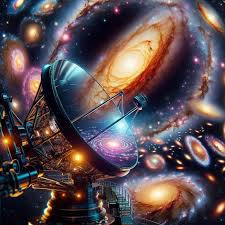The James Webb Space Telescope (JWST) has done it again—this time peering so deeply into the early universe that it has uncovered 83 dazzling galaxies that existed over 11 billion years ago.
These aren’t ordinary cosmic specks. Many appear to be “starburst” galaxies, churning out new stars at furious rates—challenging everything scientists thought they knew about the early cosmos.
Into the Distant Past
Using its highly sensitive infrared instruments, Webb collected data on light that’s been traveling for eons—since the universe was just a fraction of its current age.
When scientists analyzed this ancient light, they were surprised to find not faint, struggling baby galaxies, but bright, bustling stellar nurseries.
The newly detected galaxies are estimated to have formed just 600–800 million years after the Big Bang—cosmically speaking, just moments after time began.
The Starburst Phenomenon
A starburst galaxy is one where stars are forming hundreds of times faster than in the Milky Way today. The discovery of so many of them in such a narrow slice of sky has sent astronomers into a frenzy.
Why were galaxies in the early universe so hyperactive? What fueled this galactic fireworks display?
Theories are swirling: perhaps early gas clouds were especially dense, or maybe cosmic collisions between young galaxies jumpstarted rapid star formation.
Rewriting the Textbooks
Prior to Webb, it was thought that galaxies evolved slowly from small clouds into the magnificent spirals and clusters we see today. But these starbursts suggest that massive, luminous galaxies might have formed much faster and in greater numbers than previously expected. That means many current models of galaxy evolution may need a serious update.
The finding also hints at an unexpectedly complex and crowded early universe—a place alive with energy, growth, and rapid transformation.
A New Cosmic Dawn
This isn't just about distant stars—it’s a deeper look into our own origins. The heavy elements forged in those early stellar furnaces helped shape planets, solar systems, and eventually life itself.
The more we learn about these ancient firestorms, the more we understand our cosmic heritage.
Webb isn’t just a telescope—it’s a time machine. And with each new glimpse, it’s lighting up corners of the universe that were, until now, left in total darkness.














.jpg)
.jpg)




0 Comments